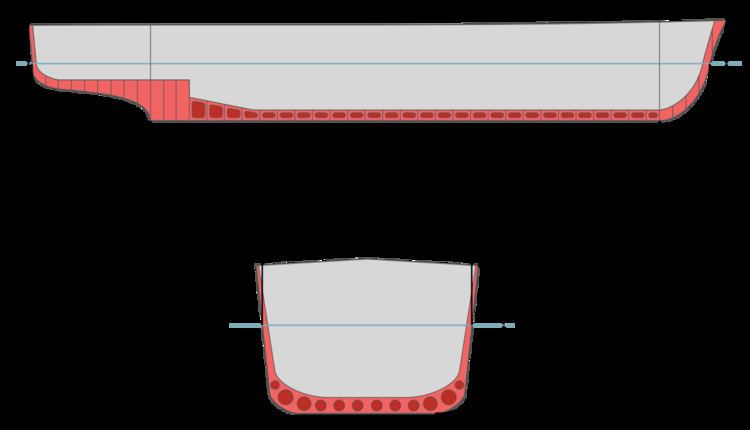 | ||
In sailing and boating, a vessel's freeboard is the distance from the waterline to the upper deck level, measured at the lowest point of sheer where water can enter the boat or ship. In commercial vessels, the latter criterion measured relative to the ship's load line, regardless of deck arrangements, is the mandated and regulated meaning.
In yachts, a low freeboard is often found on racing boats, for drag/weight reduction and therefore increased speed. A higher freeboard will give more room in the cabin, but will increase weight and drag, compromising speed. A higher freeboard also helps weather waves and reduce the likelihood of being washed over by full water waves on the weather deck. A low-freeboard boat is susceptible to taking in water in rough seas. Freighter ships and warships use high freeboard designs to increase internal volume which also allows them to satisfy IMO damage stability regulations due to increased reserved buoyancy.
